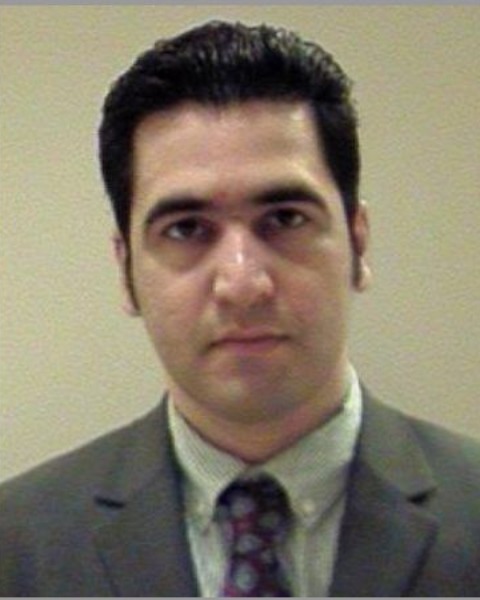Abstract Session
Rapid Fire Research Forum
(AS2) Management and Outcome Prediction for Patients with Ruptured Deep-seated Brain Arteriovenous Malformation
Monday, April 24, 2023
12:05pm - 12:10pm PST
Location: Los Angeles Convention Center, 406AB

Shahab Aldin Sattari, MD (he/him/his)
Post-Doctoral Research Fellow
Johns Hopkins University School of Medicine
Presenting Author(s)
Disclosure(s):
Shahab Aldin Sattari, MD: No financial relationships to disclose
Introduction: Treatment decision-making for ruptured deep-seated brain arteriovenous malformations (bAVMs) is controversial due to the substantial risk of bleeding, proximity to a critical structure, and suboptimal accessibility. This study seeks to shed light on this topic and management outcomes.
Methods: Our institutional database spanning 1990-2021 was retrieved. Outcomes were annual hemorrhage risk (before and after intervention), follow-up hemorrhage, bAVM obliteration, poor modified Rankin scale (i.e., mRS>2), worsened mRS, and mortality.
Results: Of the 1099 patients, 177 patients harboring ruptured deep-seated bAVMs were included. The annual hemorrhage risk was 8.24% per 364 person-year before intervention and 1.65% per 1330.6 person-year after the intervention. In multivariable Cox regression analysis, smoking (hazard ratio [HR]= 2.368 (95% confidence interval[CI] 1.000-5.605), p=0.049), bAVM-related aneurysm (HR=2.939 (1.328-6.505), p=0.007), brain stem AVM (HR=2.265 (1.011-5.073), p=0.046), and definite treatment (i.e., either surgery or radiosurgery vs. endovascular embolization or conservative management) (HR=0.266 (0.119-0.594), p=0.001) were predictors of follow-up hemorrhage. In multivariable logistic regression analysis, Spetzler Martin (SM) grade (odds ratio [OR]= 0.404 (0.171-0.917), p=0.033), brain stem AVM (OR=0.325 (0.128-0.778), p=0.014), and definite treatment (OR=8.864 (3.604-25.399), p=0.008) were predictors of obliteration. Controlling for baseline mRS, cerebellar AVM (OR=0.286 (0.098-0.731), p=0.013) and definite treatment (OR=0.361 (0.160-0.807), p=0.013) were predictors of poor mRS. Controlling for baseline mRS, smoking (OR=2.515 (0.836-7.127), p=0.087) and definite treatment (0.208 (0.076-0.553), p=0.001) were predictors of worsened mRS. Controlling for baseline mRS, smoking (OR=6.068 (1.531- 25.581), p=0.010) and definite treatment (OR=0.101 (0.024- 0.361), p=0.007) were predictors of mortality.
Conclusion : The optimal management for patients harboring ruptured deep-seated bAVMs is unclear. However, it seems definite treatment strategy is beneficial. Smoking appears to be predictive of follow-up hemorrhage, worsened mRS, and mortality
Methods: Our institutional database spanning 1990-2021 was retrieved. Outcomes were annual hemorrhage risk (before and after intervention), follow-up hemorrhage, bAVM obliteration, poor modified Rankin scale (i.e., mRS>2), worsened mRS, and mortality.
Results: Of the 1099 patients, 177 patients harboring ruptured deep-seated bAVMs were included. The annual hemorrhage risk was 8.24% per 364 person-year before intervention and 1.65% per 1330.6 person-year after the intervention. In multivariable Cox regression analysis, smoking (hazard ratio [HR]= 2.368 (95% confidence interval[CI] 1.000-5.605), p=0.049), bAVM-related aneurysm (HR=2.939 (1.328-6.505), p=0.007), brain stem AVM (HR=2.265 (1.011-5.073), p=0.046), and definite treatment (i.e., either surgery or radiosurgery vs. endovascular embolization or conservative management) (HR=0.266 (0.119-0.594), p=0.001) were predictors of follow-up hemorrhage. In multivariable logistic regression analysis, Spetzler Martin (SM) grade (odds ratio [OR]= 0.404 (0.171-0.917), p=0.033), brain stem AVM (OR=0.325 (0.128-0.778), p=0.014), and definite treatment (OR=8.864 (3.604-25.399), p=0.008) were predictors of obliteration. Controlling for baseline mRS, cerebellar AVM (OR=0.286 (0.098-0.731), p=0.013) and definite treatment (OR=0.361 (0.160-0.807), p=0.013) were predictors of poor mRS. Controlling for baseline mRS, smoking (OR=2.515 (0.836-7.127), p=0.087) and definite treatment (0.208 (0.076-0.553), p=0.001) were predictors of worsened mRS. Controlling for baseline mRS, smoking (OR=6.068 (1.531- 25.581), p=0.010) and definite treatment (OR=0.101 (0.024- 0.361), p=0.007) were predictors of mortality.
Conclusion : The optimal management for patients harboring ruptured deep-seated bAVMs is unclear. However, it seems definite treatment strategy is beneficial. Smoking appears to be predictive of follow-up hemorrhage, worsened mRS, and mortality
